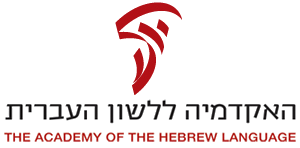
An alphabet is a standardized set of written letters that represent particular spoken sounds in a language. Specifically, letters correspond to phonemes, the categories of sounds that can distinguish one word from another in a given language. Not all writing systems represent language in this way: a syllabary assigns symbols to spoken syllables, while logographic systems assign symbols to spoken words, morphemes, or other semantic units.

Norwegian is a North Germanic language spoken mainly in Norway, where it is an official language. Along with Swedish and Danish, Norwegian forms a dialect continuum of more or less mutually intelligible local and regional varieties; some Norwegian and Swedish dialects, in particular, are very close. These Scandinavian languages, together with Faroese and Icelandic as well as some extinct languages, constitute the North Germanic languages. Faroese and Icelandic are not mutually intelligible with Norwegian in their spoken form because continental Scandinavian has diverged from them. While the two Germanic languages with the greatest numbers of speakers, English and German, have close similarities with Norwegian, neither is mutually intelligible with it. Norwegian is a descendant of Old Norse, the common language of the Germanic peoples living in Scandinavia during the Viking Age.

A loanword is a word at least partly assimilated from one language into another language, through the process of borrowing. Loanwords may be adapted to the phonology, phonotactics, orthography, and morphology of the target language. When a loanword is fully adapted to the rules of the target language, it is distinguished from native words of the target language only by its origin. However, often the adaptation is incomplete, so loanwords may conserve specific features distinguishing them from native words of the target language: for example, loaned phonemes and sound combinations, partial or total conserving of the original spelling, foreign plural or case forms or indeclinability.
A spelling reform is a deliberate, often authoritatively sanctioned or mandated change to spelling rules. Proposals for such reform are fairly common, and over the years, many languages have undergone such reforms. Recent high-profile examples are the German orthography reform of 1996 and the on-off Portuguese spelling reform of 1990, which is still being ratified.
Bokmål is one of the official written standards for the Norwegian language, alongside Nynorsk. Bokmål is by far the most used written form of Norwegian today, as it is adopted by 85% to 90% of the population in Norway. There is no countrywide standard or agreement on the pronunciation of Bokmål and the spoken dialects vary greatly.
Katharevousa is a conservative form of the Modern Greek language conceived in the late 18th century as both a literary language and a compromise between Ancient Greek and the contemporary vernacular, Demotic Greek. Originally, it was widely used for both literary and official purposes, though sparingly in daily language. In the 20th century, it was increasingly adopted for official and formal purposes, until minister of education Georgios Rallis made Demotic Greek the official language of Greece in 1976, and in 1982 Prime Minister Andreas Papandreou abolished the polytonic system of writing for both Demotic and Katharevousa.
Demotic Greek or Dimotiki is the standard spoken language of Greece in modern times and, since the resolution of the Greek language question in 1976, the official language of Greece. "Demotic Greek" contrasts with Katharevousa, which was used in formal settings, during the same period. In that context, Demotic Greek describes the specific non-standardized vernacular forms of Greek used by the vast majority of Greeks during the 19th and 20th centuries.

The Academy of the Hebrew Language was established by the Israeli government in 1953 as the "supreme institution for scholarship on the Hebrew language in the Hebrew University of Jerusalem of Givat Ram campus."

Jewish languages are the various languages and dialects that developed in Jewish communities in the diaspora. The original Jewish language is Hebrew, supplanted as the primary vernacular by Aramaic following the Babylonian exile. Jewish languages feature a syncretism of Hebrew and Judeo-Aramaic with the languages of the local non-Jewish population.
In Hebrew orthography, niqqud or nikud is a system of diacritical signs used to represent vowels or distinguish between alternative pronunciations of letters of the Hebrew alphabet. Several such diacritical systems were developed in the Early Middle Ages. The most widespread system, and the only one still used to a significant degree today, was created by the Masoretes of Tiberias in the second half of the first millennium AD in the Land of Israel. Text written with niqqud is called ktiv menuqad.
Etymology is the scientific study of the origin and evolution of a word's semantic meaning across time, including its constituent morphemes and phonemes. It is a subfield of historical linguistics, philology, and semiotics, and draws upon comparative semantics, morphology, pragmatics, and phonetics in order to construct a comprehensive and chronological catalogue of all meanings that a morpheme, phoneme, word, or sign has carried across time.
Phono-semantic matching (PSM) is the incorporation of a word into one language from another, often creating a neologism, where the word's non-native quality is hidden by replacing it with phonetically and semantically similar words or roots from the adopting language. Thus the approximate sound and meaning of the original expression in the source language are preserved, though the new expression in the target language may sound native.

Izhitsa is a letter of the early Cyrillic alphabet and several later alphabets, usually the last in the row. It originates from the Greek letter upsilon and was used in words and names derived from or via the Greek language, such as кѵрилъ or флаѵии. It represented the sounds or as normal letters и and в, respectively. The Glagolitic alphabet has a corresponding letter with the name izhitsa as well. Also, izhitsa in its standard form or, most often, in a tailed variant was part of a digraph оѵ/оу representing the sound. The digraph is known as Cyrillic "uk", and today's Cyrillic letter u originates from its simplified form.

Linguistic purism or linguistic protectionism is the prescriptive practice of defining or recognizing one variety of a language as being purer or of intrinsically higher quality than other varieties. Linguistic purism was institutionalized through language academies, and their decisions often have the force of law.
Dano-Norwegian was a koiné/mixed language that evolved among the urban elite in Norwegian cities during the later years of the union between the Kingdoms of Denmark and Norway (1536/1537–1814). It is from this koiné that the unofficial written standard Riksmål and the official written standard Bokmål developed. Bokmål is now the most widely used written standard of contemporary Norwegian.
Linguistic purism in Icelandic is the policy of discouraging new loanwords from entering the language, by creating new words from Old Icelandic and Old Norse roots. In Iceland, linguistic purism is archaising, trying to resuscitate the language of a golden age of Icelandic literature. The effort began in the early 19th century, at the dawn of the Icelandic national movement, aiming at replacing older loanwords, especially from Danish, and it continues today, targeting English words. It is widely upheld in Iceland and it is the dominant language ideology. It is fully supported by the Icelandic government through the Árni Magnússon Institute for Icelandic Studies, the Icelandic Language Council, the Icelandic Language Fund and an Icelandic Language Day.

Ghil'ad Zuckermann is an Israeli-born language revivalist and linguist who works in contact linguistics, lexicology and the study of language, culture and identity.

Language Contact and Lexical Enrichment in Israeli Hebrew is a scholarly book written in the English language by linguist Ghil'ad Zuckermann, published in 2003 by Palgrave Macmillan. The book proposes a socio-philological framework for the analysis of "camouflaged borrowing" such as phono-semantic matching. It introduces for the first time a classification for "multisourced neologisms", new words that are based on two or more sources at the same time.